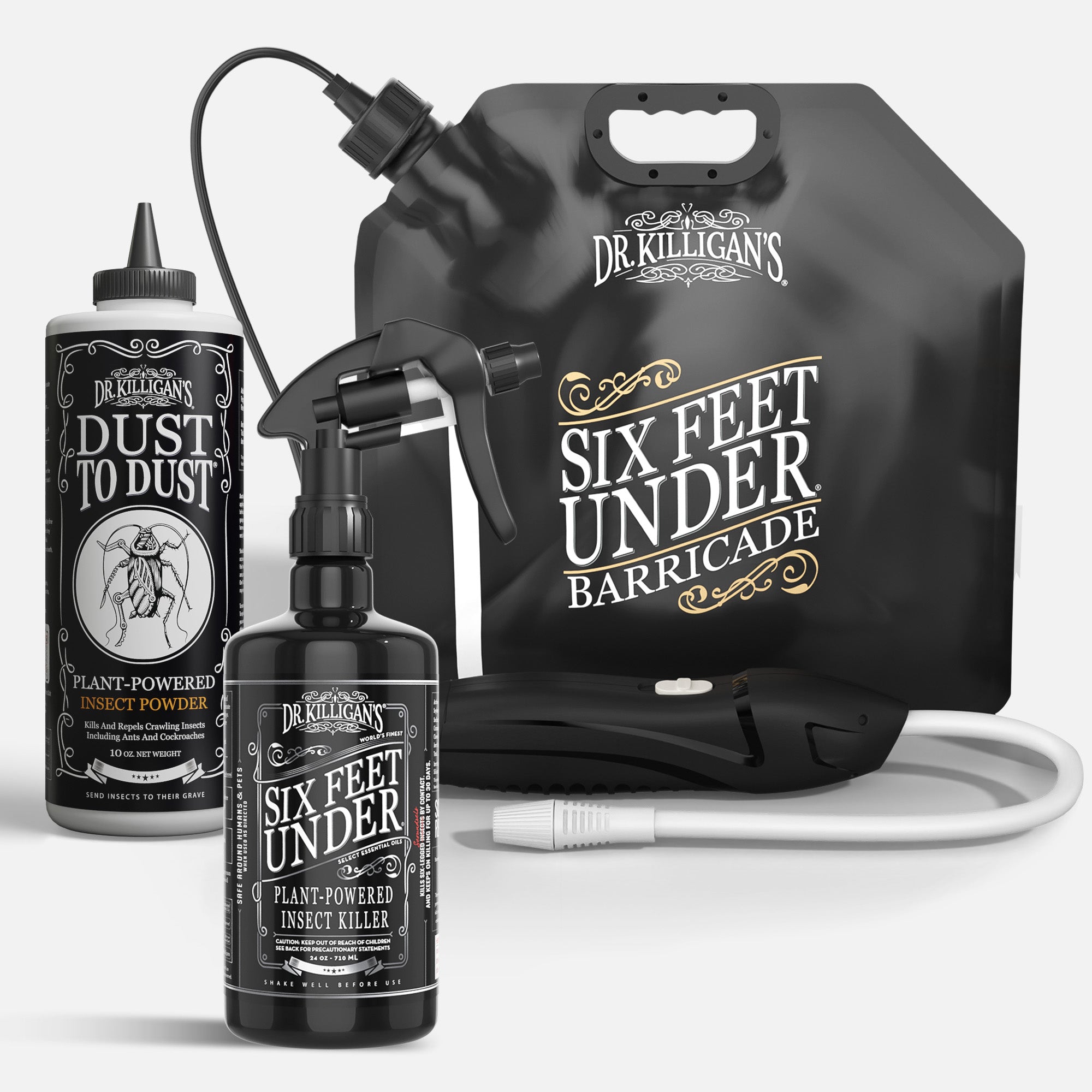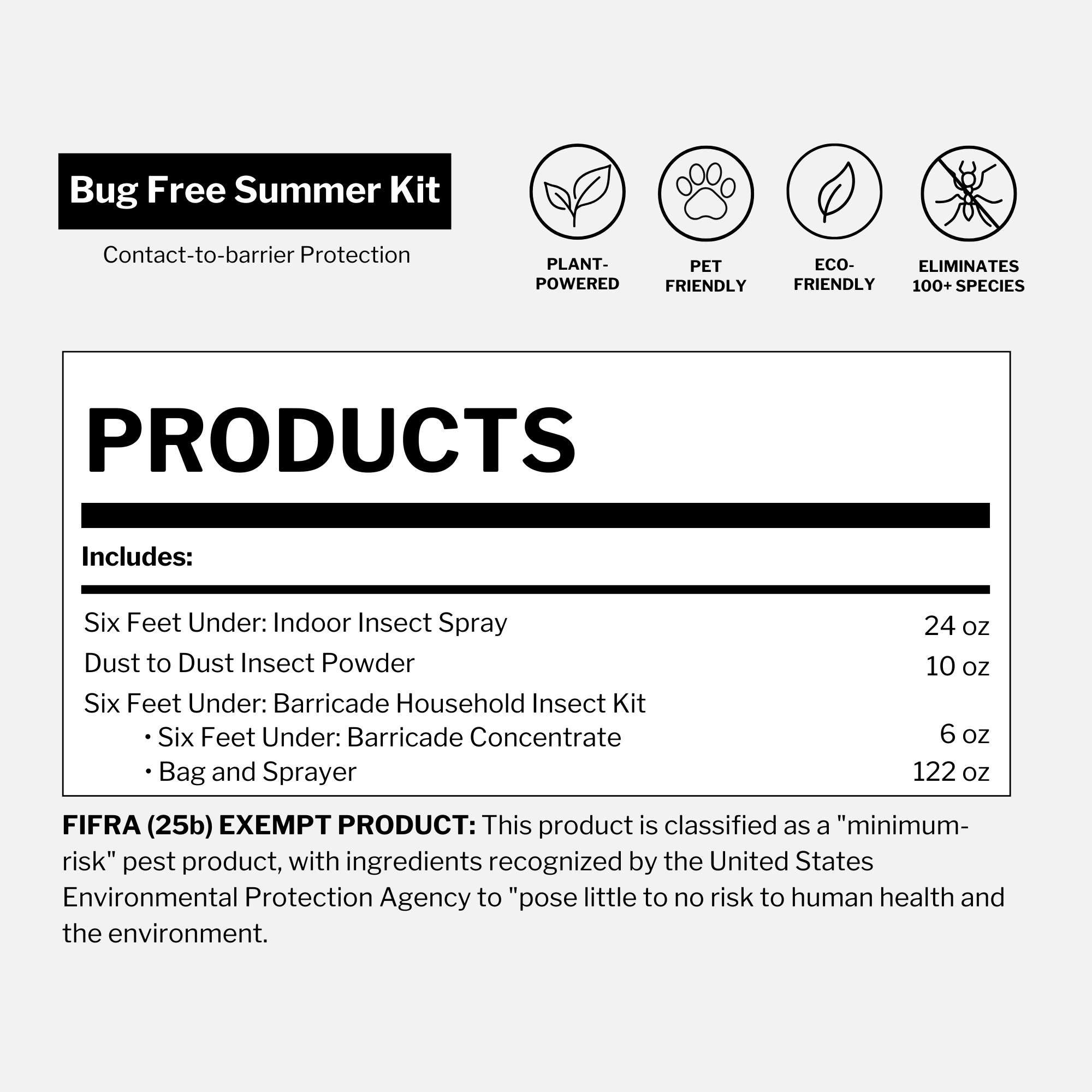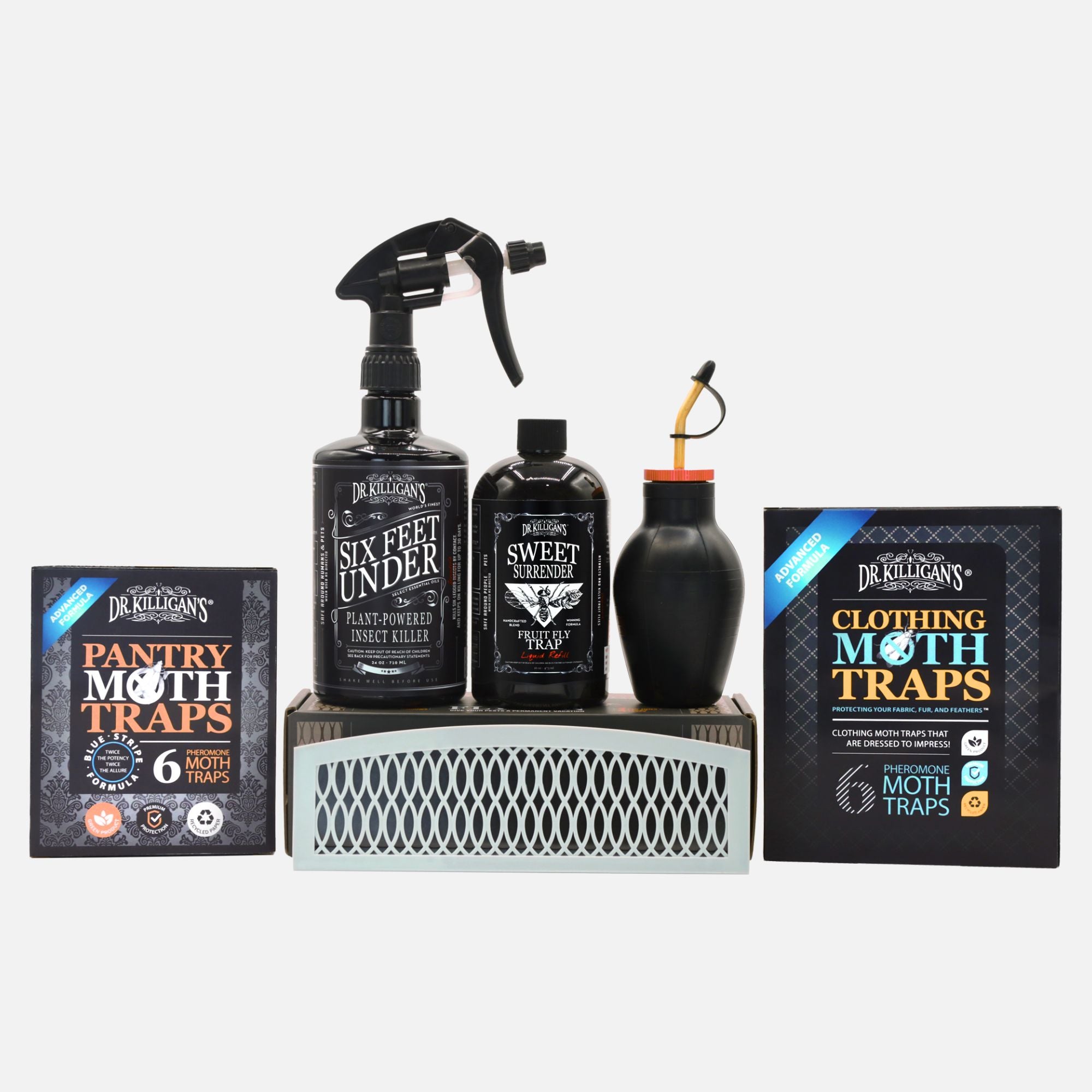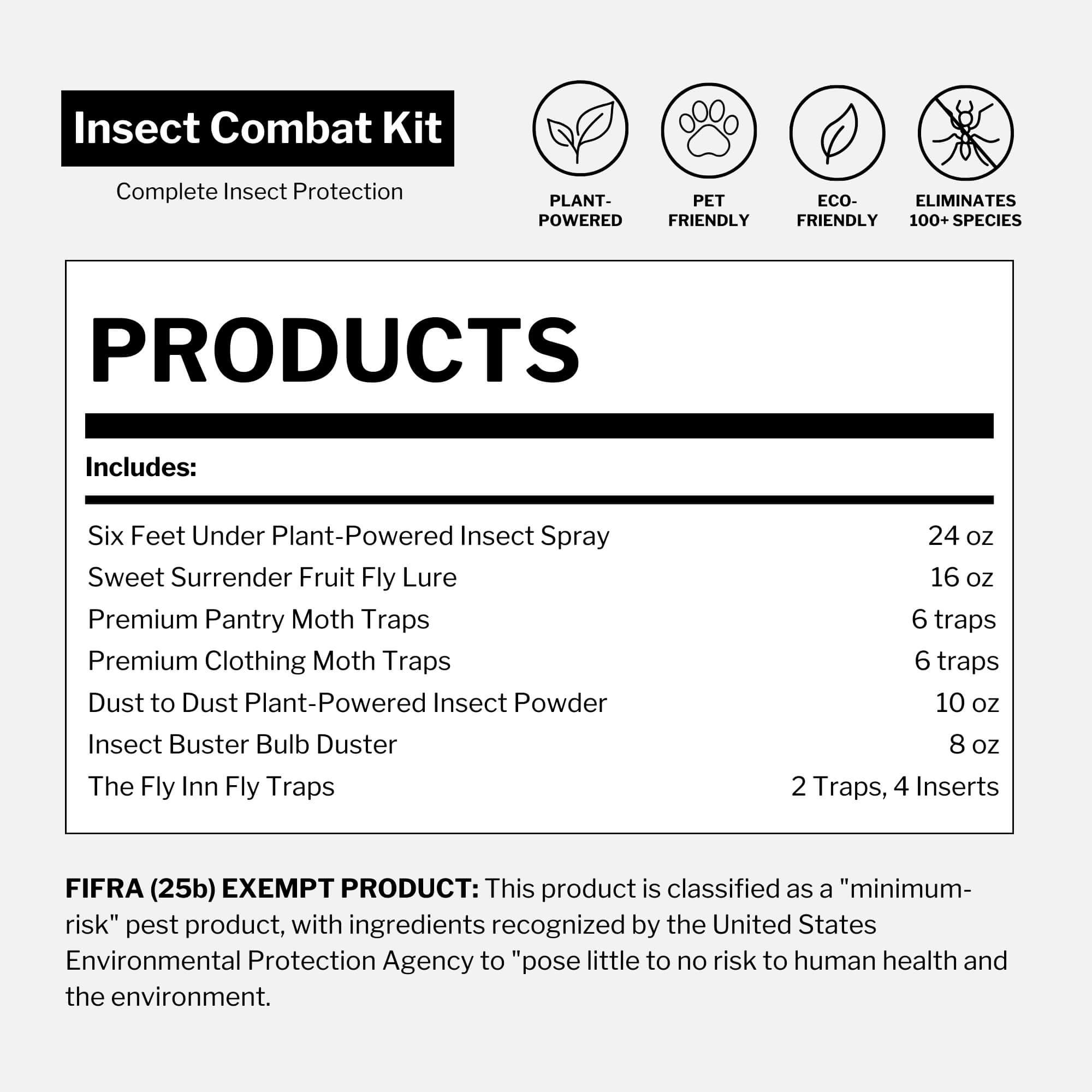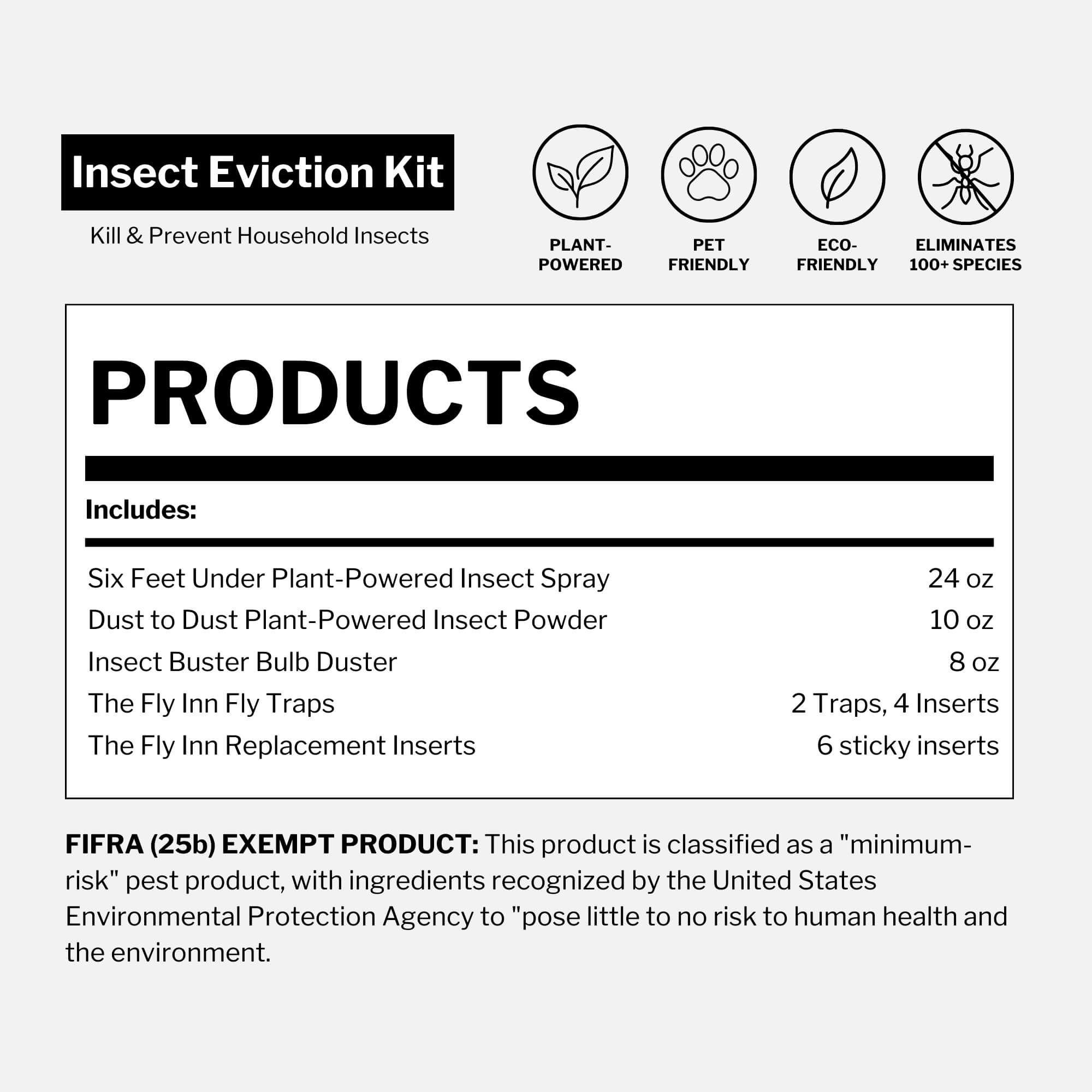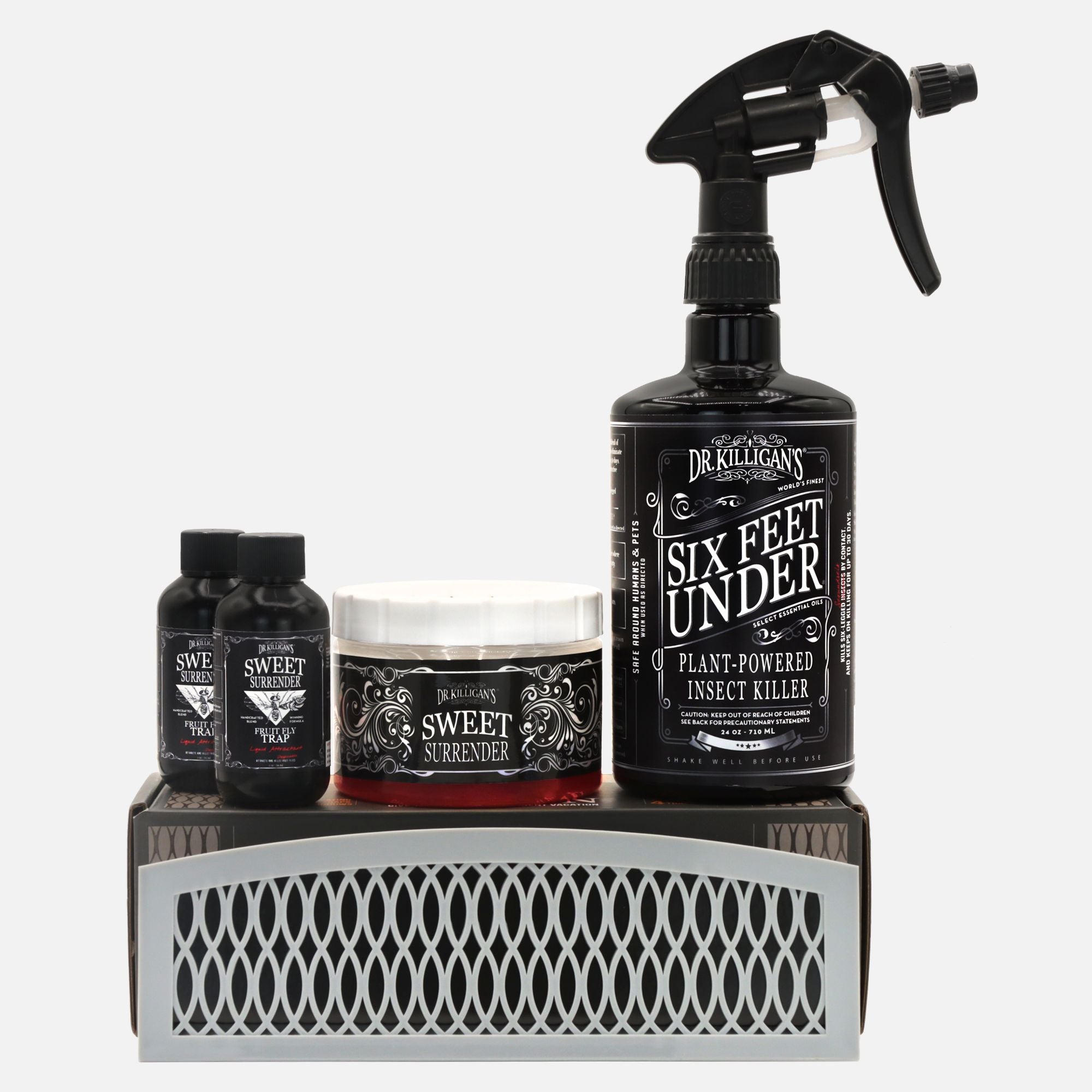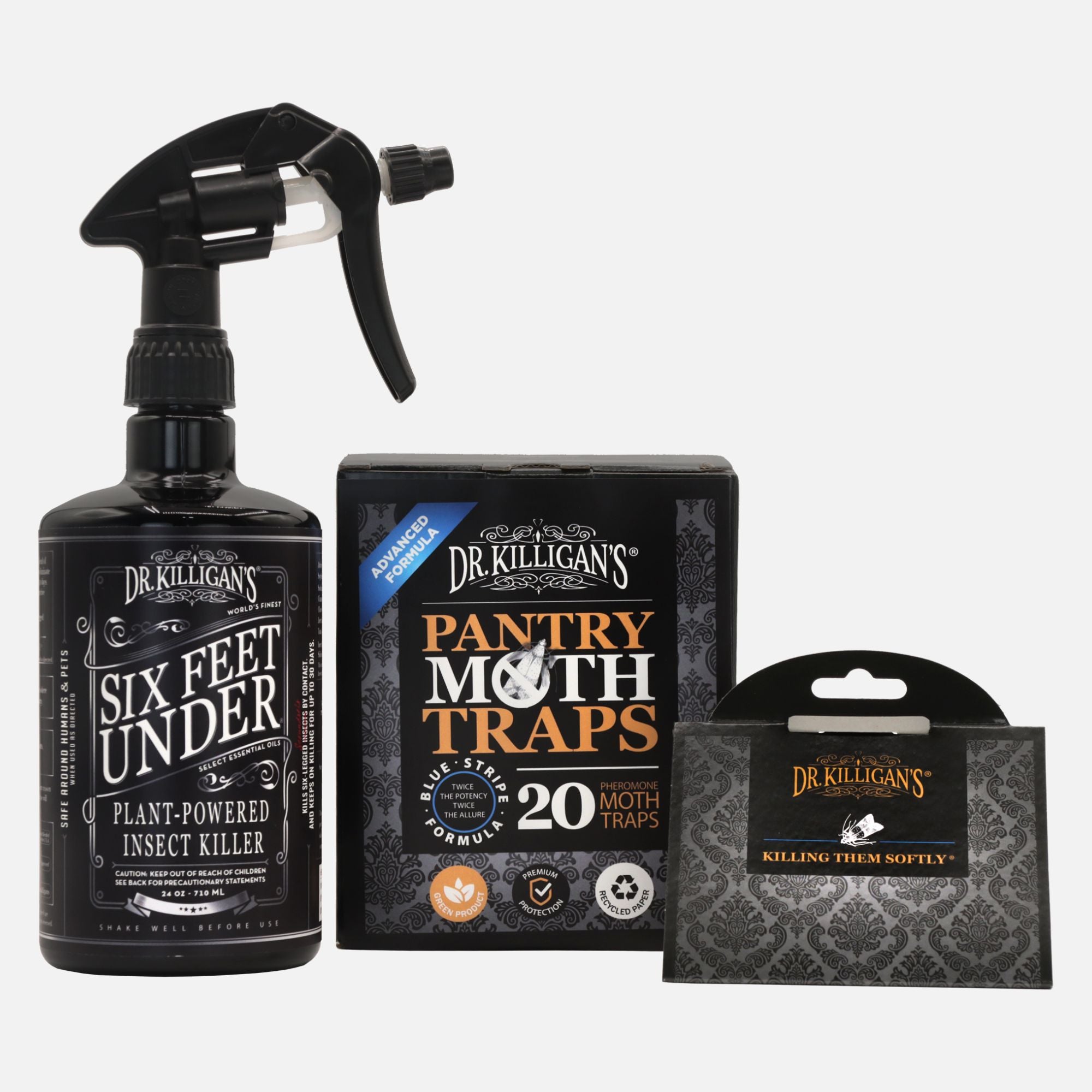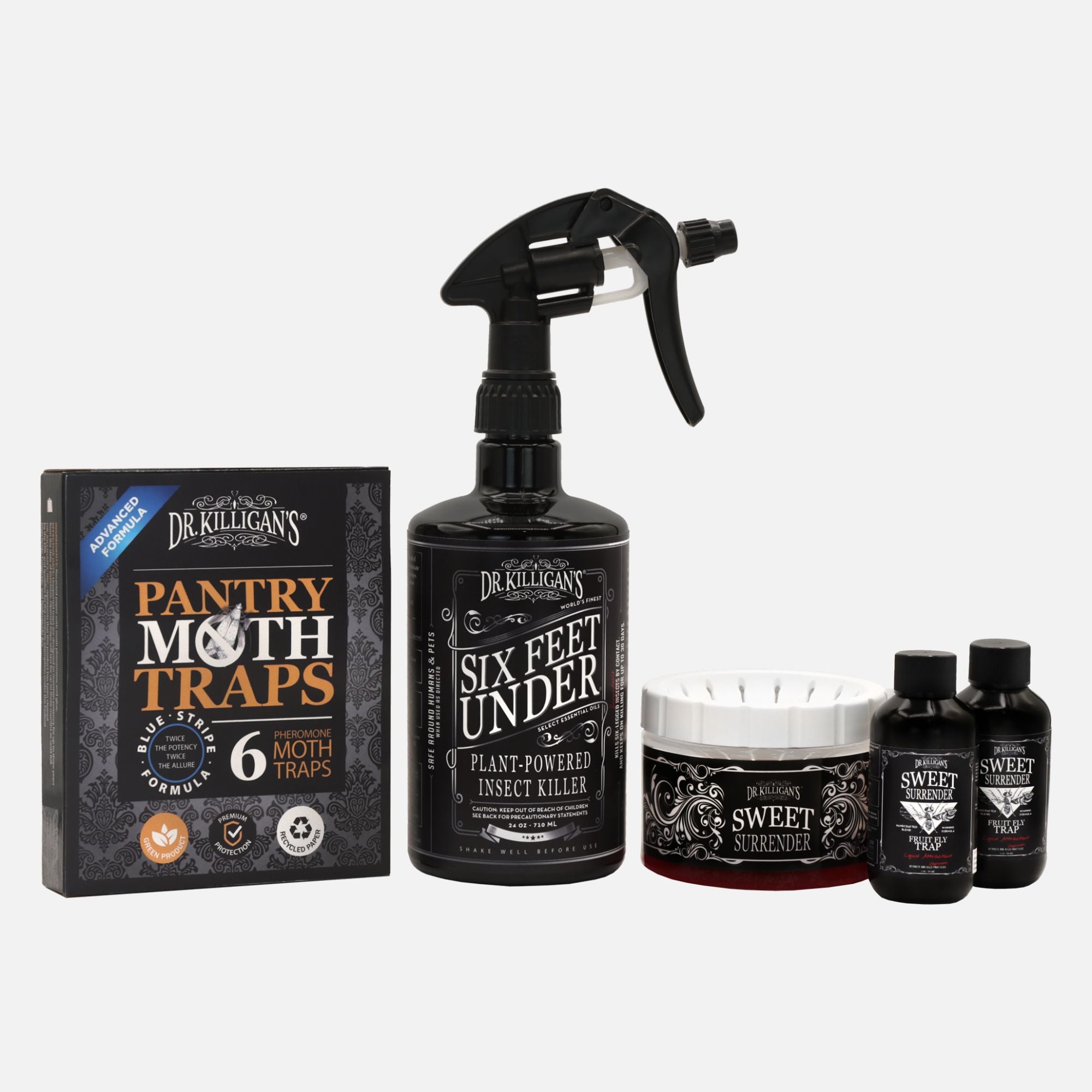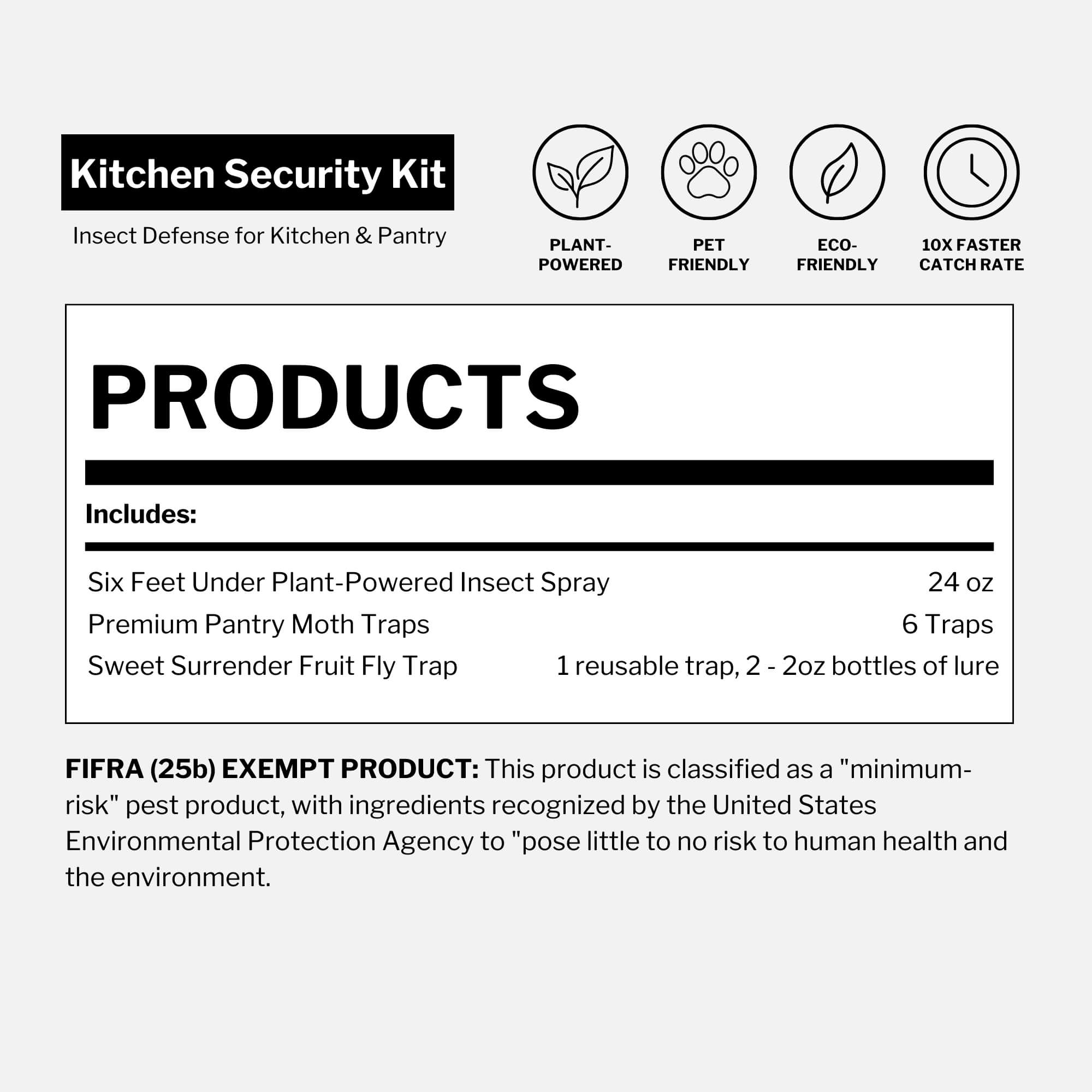Updated on June 16th, 2025
If you've discovered moths in your cereal or rice, you're likely wondering: What is the pantry moth life cycle—and how long do pantry moths live?
Understanding the pantry moth life cycle helps you prevent a full-blown infestation—and knowing how to get rid of pantry moths quickly is essential for protecting your food.
In this guide, we’ll explain the four pantry moth life cycle stages, how long each stage lasts and how to prevent future infestations.
Pantry moth life cycle: How long do pantry moths live—and how to stop an infestation
The life cycle of pantry moths is short but destructive. While the pantry moth lifespan ranges from 30 to 300 days, it can lay hundreds of eggs in that time. This sole moth can do considerable damage to your pantry and the food it contains.
The entire pantry moths life cycle can unfold in as little as a month when conditions are warm.
Here are details about each stage:
Pantry moth egg stage: Brief but prolific
During this stage—about a week—their activity is dormant. The central issue is the number of eggs laid. There can be up to 400 and—most likely—you will not see them. Until ready to hatch into larvae, moth eggs are not visible to the naked eye. To survive, the adult moth lays eggs directly on a food source—a bag of flour, beans or rice, a box of cereal, an improperly sealed bag of pet food—anywhere it has access.
How long can pantry moth eggs remain dormant? Pantry moth eggs usually hatch within 4 to 7 days under optimal conditions. However, cooler temperatures can delay this process. A study on the greater wax moth (Galleria mellonella) found that eggs stored at 10°C developed more slowly and had reduced viability. While not the same species, it suggests pantry moth eggs may also remain viable for several weeks—especially in cool, undisturbed areas like unopened pantry goods.
Larvae stage: Most destructive phase of pantry moth life cycle
When an egg hatches, the larvae feed on nearby food. That’s why pantry moths lay eggs directly on dry goods. This is the most destructive stage in the life cycle of pantry moth. Unfortunately, you often don’t notice an infestation until larvae are visible inside the food—by which point it’s too late.
Pupae stage: When pantry moths go dormant again
After the larvae have grown and found their way to a resting place, they spin thin webs and create a cocoon so they can grow into an adult moth. As the pupa grows, it is once again dormant. This stage lasts around two weeks. Once complete, the cocoons are hatched and you have an adult moth.
Adult moth: How long do pantry moths live and reproduce?
Adults can be a nuisance but are relatively harmless. Their job right now is to mate and lay eggs. After that process is complete, they will not live much longer. However, that life continues through the possible hundreds of eggs the moth laid.
Quick look: Pantry moth life cycle timeline
- Egg stage: 4-7 days (dormant)
- Larvae stage: 2-3 weeks (most active and damaging)
- Pupae stage: ~2 weeks (in cocoons)
- Adult stage: 1-2 weeks (for mating and laying eggs)
- Total lifespan: 30-300 days, depending on conditions
Note: Pantry moth life cycle time ranges 30–300 days, depending on temperature and food availability. Cooler conditions can extend the moth lifespan by slowing development—especially during the larval or pupal stages. [This is also referred to as the Indian pantry moth life cycle in many pest control resources.]
How to stop pantry moths during each stage:
Stopping an infestation means targeting pantry moths at every stage of their life cycle. Eggs are best neutralized by freezing dry goods or using airtight containers. Larvae can be eliminated by disposing of infested food and deep-cleaning pantry shelves with vinegar or soapy water, followed by Six Feet Under Plant-Powered Insect Spray. For pupae, inspect corners, shelf edges and even hinge cracks—these hidden spots often harbor cocoons. And for adult moths, use pheromone traps like Dr. Killigan’s Premium Moth Traps to stop mating and break the reproductive cycle.
How to keep pantry moths out of your food pantry
If you live in an area prone to pantry moth activity, there’s good news: you can prevent an infestation before it starts. Understanding the pantry moth life cycle is key—because stopping them early means protecting your food, not just reacting later. Use the preventive measures below to keep your pantry clean, sealed and moth-free.
Keep your pantry clean and sealed
Pantry moths won’t thrive in a clean, well-maintained space. To reduce the risk of infestation:
- Store dry goods (including pet food and birdseed) in airtight containers
- Rotate food stock regularly to use older items first
- Clean up crumbs and spills immediately
Note: If you find moths in your closet or on your clothes, they’re likely clothes moths—not pantry moths.
Check food and cabinets regularly
As adults, moths do not only come in through an open front door or holes in your home. The food you bring in is susceptible to infestation even before it leaves the grocery store.
To reduce risk:
- Inspect dried goods at the store for holes, eggs or larvae
- If in doubt, freeze items for one week to kill any hidden eggs
- Regularly inspect and clean your pantry—even if no activity is visible
Use preventive measures that work
During the life cycle of a moth, it is never more susceptible to preventive methods than it is in its adult stage. The idea of prevention is to keep them from breeding and laying eggs. However, sprays can be toxic and many DIY methods are ineffective and temporary. You need a proven method for capturing and disposing of these moths before they can lay eggs and start the cycle again.
For reliable prevention, use Dr. Killigan’s Premium Moth Traps. These attract and capture adult pantry moths—stopping reproduction and keeping your pantry protected.
The final word on the pantry moth life cycle—and how to stop it

So, when’s the best time to stop pantry moths? During the adult phase—their brief window for mating and egg-laying. To break the cycle and stop pantry moths before they reproduce, use Dr. Killigan’s Premium Moth Traps—an effective, chemical-free solution designed for lasting protection.
Beauty meets function. Dr. Killigan’s Premium Moth Traps are designed to look as good as they perform, with sleek packaging that blends seamlessly into your pantry. Each trap remains effective for up to three months once opened, offering long-lasting protection without harsh chemicals. Safe for your family, your pets and the planet.




